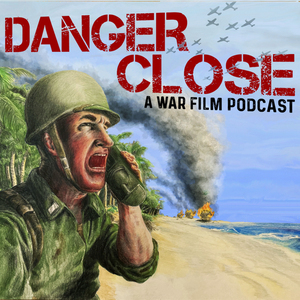Jack Johannessen
Secret Police Podcast - host
Context:
The Somali Civil War has been ongoing since about the 1980s until the present day. When the conflict
began, Somalia was under the control of a military junta led by general Siad Barre who received military
training in Italy and served in the Italian campaign against Ethiopia during WWII.
Barre’s government kept a tight grip on Somalia through the National Security Service (NSS) which was
the most widely known secret police modeled on the Soviet KGB. There were other intelligence agencies
attached this Barre’s government, but they disbanded in around 1991 when Barre was overthrown. To
the best of my recollection, NSS isn’t mentioned in the film nor are their agents explicitly depicted. In
2013, Somali government started a new intelligence agency called the National Intelligence and Security
Agency (NISA) who used child-informants to combat al-Shabab, a radical Islamist group.
Battle of Mogadishu:
The Americans collected intelligence from local with help from the CIA and the US Army Intelligence
support Agency (ISA). In one instance, a financier of one of Somalia’s Rebel Groups (the Somali National
Alliance), Osman Atto was captured because spies recruited by the CIA were able to provide Atto with a
walking cane embedded with a hidden tracking device. In the film, we see the American Task Force
communicate with a local man who drives around Mogadishu and identifies specific individuals and
buildings. This is similar to what NISA made their child-informants do when combating al-Shabab.
24 Pakistani soldiers attached to a UN peacekeeping force were killed in an attack in June 1993, but as
far as I can tell there was no documented involvement of the Pakistani Inter-Service Intelligence (ISI)
agency.
Sources:
https://www.washingtonpost.com/world/africa/exclusive-us-funded-somali-intelligence-agency-has-
been-using-kids-as-spies/2016/05/06/974c9144-0ce3-11e6-a6b6-2e6de3695b0e_story.html
Loeb, Vernon (27 February 2000). "The CIA in Somalia: After-Action Report". Somalia Watch. Washington
Post Magazine. Archived from the original on 21 September 2004. Retrieved 8 August 2022.
Day, Clifford E. (March 1997). "Critical Analysis on the Defeat of Task Force Ranger AU/ACSC/0364/97-
03" (PDF). National Security Archive. Research Department Air Command and Staff College. Archived
from the original (PDF) on 24 August 2017. Retrieved 8 August 2022.
Kyle Pocock
Long serving as a center of commerce as far back as Ancient Egypt, Somalia’s position on the horn of Africa meant that it has been a sought after crossroads for thousands of years. Somalia was under British rule as part of India in the 1890s, then was taken over by the Italians in 1889. The popular Anti-Colonial Dervish pushed Italian and British influence back to the coastal cities multiple times before being defeated in 1920. Italian Fascism led to a greater presence in the area, with infrastructure development and military build up leading to the invasion of neighboring Ethiopia in 1935. With World War 2 in full swing, they continued south into British Somaliland in August 1940, being repulsed and beaten back by a British campaign that ended with British control over all Italian territory in Somalia. Languishing under a neglectful British Colonialism, Somalia finally gained independence in 1960 to form the Somali Republic. In October 1969, President Abdirashid Ali Shermarke was assassinated and an unopposed military coup followed, leaving Major General Mohamed Siad Barre in charge of the country. He promptly formed the Supreme Revolutionary Council full of his cronies, suspended the constitution, dissolved the democratic government, and renamed the country the Somali Democratic Republic. In July 1976, the country established a one-party system under the Somali Revolutionary Socialist Party which combined Marxist concepts with foundational Muslim principles. Barre sought to acquire the Ogaden region of Ethiopia into Somalia, leading to a year-long war featuring unexpectedly strong Soviet support of Ethiopia in manpower from Cuba that helped lead to an Ethiopian victory in 1978. Feeling betrayed by the Soviets, Barre instead turned to the United States for support.
In 1979, a new constitution was enacted and elections were held for a People’s Assembly, initially voting in the Socialist party before the Supreme Revolutionary Council returned to replace it in 1980. Losing public support, and with weakening importance in the global stage as the Cold War wound down, resistance movements to the military led government would begin to gain popular support in the 1980s. Violent suppression of these movements by Barre and his son-in-law, Mohammed Said Hersi Morgan, only seemed to fan the flames of public dissent. By 1990, strict rules in place limited public meetings and trade caused fuel shortages and severe inflation. Finally, in early 1991, Barre’s government was defeated by a coalition of local clans and Ethiopian and Libyan support. The power vacuum this created led to competition among these clans that quickly turned violent. Two leaders in the south vied for control over Mogadishu, Mohamed Farah Aidid and Ali Moahdi Mohamed,with Mohamed being named the President of Somalia by an international conference in neighboring Djibouti. Despite this title, he was only given real control over Mogadishu, with local leaders in the south and the still European influenced regions in the north.
A few related and informative videos:
https://youtu.be/1ApfDyeP7Zk?si=doupfNKU0zMT-g4d
https://youtu.be/nH2rnvGWDuU?si=Rwd2NK059m7a718d
CRITICAL ANALYSIS ON THE DEFEAT OF TASK FORCE RANGER - Maj Clifford E. Day
Battle of Mogadishu Wikipedia link
Mark Bowden reflects back for Smithsonian Magazine Jan 2019
Black Hawk Down and the Silences of Ridley Scott's "Realism" - Robert Nellis
